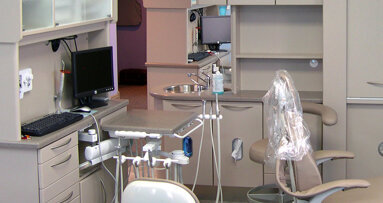Twenty-two years ago, a seminal report from the Institute of Medicine (IOM) in the U.S., titled “Emerging Infections: Microbial Threats to Health in the United States,” warned of the dangers of newly emerging and re-emerging diseases. The concept of “emerging infectious diseases,” introduced then by the IOM, is now well entrenched, and to our chagrin we have witnessed many such diseases over the past two decades.
These include variant Creutzfeldt–Jakob disease/bovine spongiform encephalopathy, severe acute respiratory syndrome, Middle East respiratory syndrome and, above all, the pandemic of acquired immune deficiency syndrome (AIDS), which has claimed millions of lives the world over. The re-emerging infectious diseases we have seen include diseases caused by meticillin-resistant Staphylococcus aureus, and multidrug-resistant and extensively drug-resistant tuberculosis.
Interestingly, the concept of “emerging infectious diseases” is not new. Indeed, ancient Greek, Roman and Persian writers documented the emergence of many new epidemics. In more recent times, the scientist Robert Boyle presciently observed in 1865 that “there are ever new forms of epidemic diseases appearing … among [them] the emergent variety of exotic and hurtful.” Arguably, though, the most noteworthy relatively new emerging infectious disease with the greatest impact on the dental profession has been the human immunodeficiency virus and AIDS.
And now we have a severe epidemic of Ebola virus infection. It is back with a vengeance, this time in West Africa, with more than [1,500 confirmed cases at press time] and a 69 percent case fatality ratio [at the time of writing]. The culprit is the Zaire Ebola virus species, the most lethal Ebola virus known, with case fatality ratios up to 90 percent.
According to the IOM report, there are many reasons that new diseases emerge and re-emerge. These include health care advances with the attendant problems (e.g. transplantation, immunosuppression, antibiotic abuse, and contaminated blood and blood products) and human behavior, including injectable drug abuse and sexual promiscuity. Societal occurrences, such as economic impoverishment, war and civil conflict, too, are critical, according to the IOM. The current outbreak of Ebola virus infection is a perfect storm created by a lethal combination of some of these factors and also including rampant deforestation, poverty and the war-stricken situation in many African countries.
So how does Ebola spread? According to World Health Organization reports, Ebola virus disease (EVD) is introduced into the human population through close contact with the blood, secretions, organs or other bodily fluids of infected animals. Human-to-human transmission is through direct contact (through broken skin or mucous membranes) with the blood, secretions, organs or other bodily fluids, such as saliva, of infected people, and indirect contact with environments contaminated with such fluids.
Transmission through the air has not been documented in the natural environment, nor have there been any case reports of transmission through saliva contamination. Infection in health care settings has been due to health care workers treating patients with suspected or confirmed EVD, especially when infection control precautions were not strictly practiced. Reports indicate that those who recovered from the disease could transmit the virus through their semen for up to two months after recovery.
EVD is a severe acute illness characterized by the sudden onset of fever, intense weakness, muscle pain, headache and sore throat. This is followed by vomiting, diarrhea, rash, impaired kidney and liver function, and both internal and external bleeding in some cases. Oral manifestations, such as acute gingival bleeding, have been reported. The mortality rate of EVD is very high and 50–90 percent of patients die owing to the profound systemic hemorrhage or its complications. The incubation period of EVD is two to 21 days.
Up to now, there have been no reported cases of transmission of EVD in any dental settings. However, the fact that it is transmitted through human secretions, which includes saliva, and that the incubation period could last up to 21 days implies that dental care workers in the endemic areas of the virus, such as West Africa and sub-Saharan Africa, may run the risk of acquiring the disease if strict standard infection control measures are not routinely followed.
In dentistry, we are constantly exposed to these emerging and re-emerging infectious threats, and we cannot afford to let our guard down. Vigilance, awareness and good clinical practice with standard infection control at all times are fundamental to prevention, as-yet-unimagined new diseases surely lie in wait. Although we have made spectacular technical and scientific advances since the release of the original IOM report some two decades ago, it appears that humans are still defenseless in the face of the relentless march of our microbe foes.
ATLANTA, Ga., USA: The Organization for Safety, Asepsis and Prevention (OSAP) is ramping up its efforts to support Dental Infection Control Awareness Month ...
Since 1925, Tuttnauer has provided complete infection control solutions for dental clinics, while investing in R&D and launching technologically ...
NEW YORK, N.Y., USA: “Infection Control in Practice Team Huddle” is a bi-monthly training guide published by the Organization for Safety, ...
The Association for Dental Safety (ADS) has opened registration for its 2026 Dental Infection Control Boot Camp. Boot Camp is an intensive course designed ...
ANNAPOLIS, Md., USA: The Organization for Safety, Asepsis and Prevention (OSAP), the advocate for “The Safest Dental Visit,” reports that its ...
ANNAPOLIS, Md., The Organization for Safety, Asepsis and Prevention (OSAP), the advocate for “The Safest Dental Visit,” has announced the ...
NEW YORK, NY and PLANO, TX, USA: More than 200 people from around the world attended the 2009 OSAP Symposium, ‘Infection Prevention: Spread the ...
More than three decades have passed since the emergence of human immunodeficiency virus (HIV) as a global pandemic. More than any other infection, it is ...
NEW YORK, N.Y., USA: Following news that a dentist in the Tulsa, Okla., area may have exposed thousands of his patients to communicable diseases because of ...
ATLANTA, Ga., USA: The Organization for Safety, Asepsis and Prevention (OSAP), a community of clinicians, educators, consultants, researchers and industry ...
Live webinar
Wed. 14 January 2026
12:00 PM EST (New York)
Dr. Théo Laplane, Dr. Robert Gottlander DDS
Live webinar
Fri. 16 January 2026
12:00 PM EST (New York)
Live webinar
Mon. 19 January 2026
1:00 PM EST (New York)
Philipp Kopp, Michael Seeber
Live webinar
Thu. 22 January 2026
9:00 AM EST (New York)
Prof. Judith Jones D.D.S; M.P.H., Prof. Kakuhiro Fukai D.D.S., Ph.D, Dr. Bathsheba (Bethy) Turton
Live webinar
Thu. 22 January 2026
2:00 PM EST (New York)
Dr. Nicola M. Grande DDS, PhD
Live webinar
Wed. 28 January 2026
8:00 AM EST (New York)
Live webinar
Wed. 28 January 2026
11:00 AM EST (New York)
Prof. Dr. Jan-Frederik Güth



 Austria / Österreich
Austria / Österreich
 Bosnia and Herzegovina / Босна и Херцеговина
Bosnia and Herzegovina / Босна и Херцеговина
 Bulgaria / България
Bulgaria / България
 Croatia / Hrvatska
Croatia / Hrvatska
 Czech Republic & Slovakia / Česká republika & Slovensko
Czech Republic & Slovakia / Česká republika & Slovensko
 France / France
France / France
 Germany / Deutschland
Germany / Deutschland
 Greece / ΕΛΛΑΔΑ
Greece / ΕΛΛΑΔΑ
 Hungary / Hungary
Hungary / Hungary
 Italy / Italia
Italy / Italia
 Netherlands / Nederland
Netherlands / Nederland
 Nordic / Nordic
Nordic / Nordic
 Poland / Polska
Poland / Polska
 Portugal / Portugal
Portugal / Portugal
 Romania & Moldova / România & Moldova
Romania & Moldova / România & Moldova
 Slovenia / Slovenija
Slovenia / Slovenija
 Serbia & Montenegro / Србија и Црна Гора
Serbia & Montenegro / Србија и Црна Гора
 Spain / España
Spain / España
 Switzerland / Schweiz
Switzerland / Schweiz
 Turkey / Türkiye
Turkey / Türkiye
 UK & Ireland / UK & Ireland
UK & Ireland / UK & Ireland
 International / International
International / International
 Brazil / Brasil
Brazil / Brasil
 Canada / Canada
Canada / Canada
 Latin America / Latinoamérica
Latin America / Latinoamérica
 China / 中国
China / 中国
 India / भारत गणराज्य
India / भारत गणराज्य
 Pakistan / Pākistān
Pakistan / Pākistān
 Vietnam / Việt Nam
Vietnam / Việt Nam
 ASEAN / ASEAN
ASEAN / ASEAN
 Israel / מְדִינַת יִשְׂרָאֵל
Israel / מְדִינַת יִשְׂרָאֵל
 Algeria, Morocco & Tunisia / الجزائر والمغرب وتونس
Algeria, Morocco & Tunisia / الجزائر والمغرب وتونس
 Middle East / Middle East
Middle East / Middle East




























































To post a reply please login or register